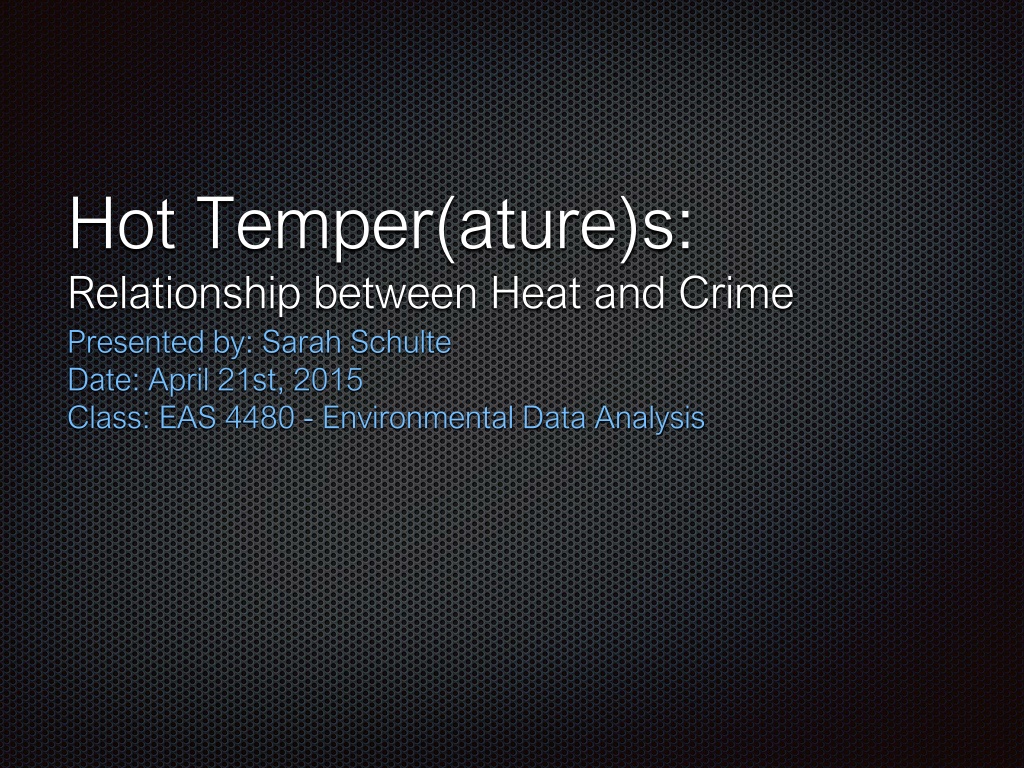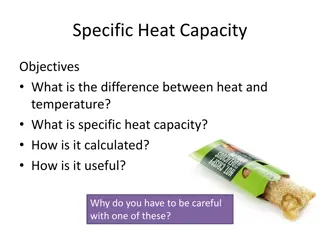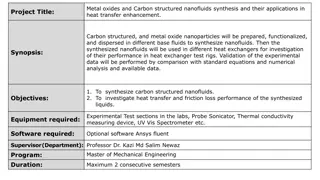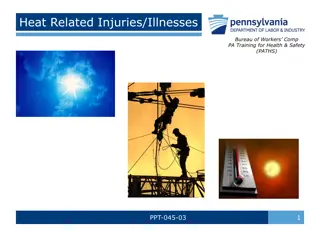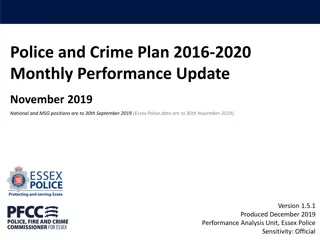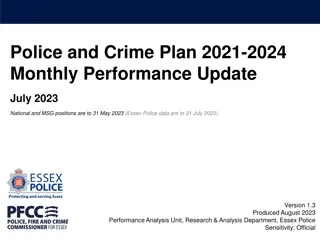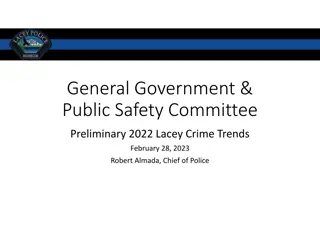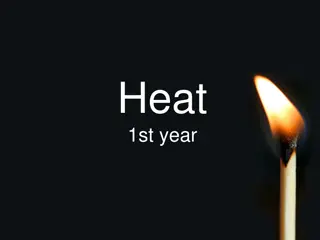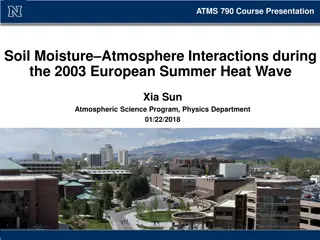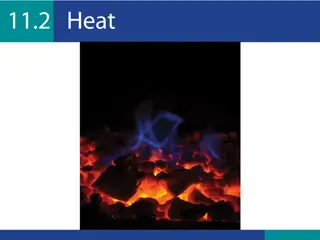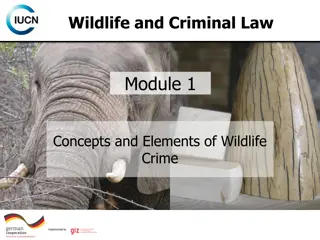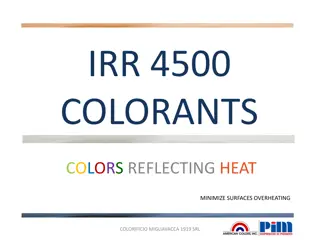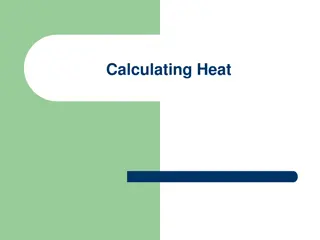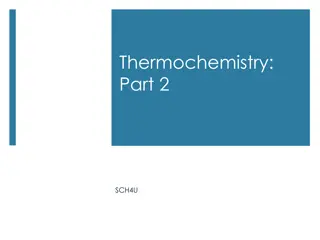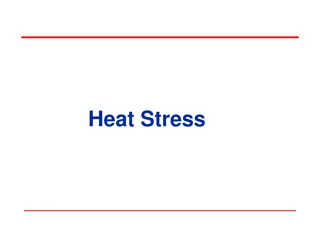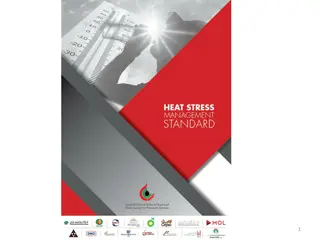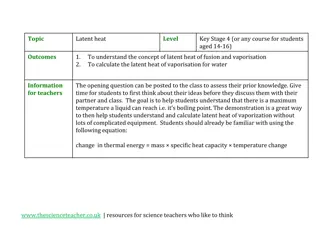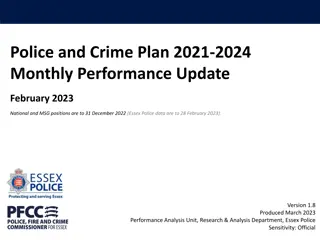Relationship Between Heat and Crime: A Data Analysis Study
This study investigates the relationship between elevated temperatures and violent crime rates in Fulton County, Atlanta, Georgia, from 2000 to 2013. Using data on monthly crime totals and average maximum temperatures, a least-squares linear regression analysis reveals significant correlations, particularly in combined violent crimes. The findings suggest that higher temperatures may contribute to increased violent criminal activities.
Download Presentation

Please find below an Image/Link to download the presentation.
The content on the website is provided AS IS for your information and personal use only. It may not be sold, licensed, or shared on other websites without obtaining consent from the author. Download presentation by click this link. If you encounter any issues during the download, it is possible that the publisher has removed the file from their server.
E N D
Presentation Transcript
Hot Temper(ature)s: Relationship between Heat and Crime Presented by: Sarah Schulte Date: April 21st, 2015 Class: EAS 4480 - Environmental Data Analysis
Background: The minds of men do in the weather share, Dark or serene as the day s foul or fair. Cicero (106-43 B.C.) Heat-related imagery has been used for thousands of years. Hot-headed Hot temper Doing a slow burn Analysts of human behavior began to test the theory of a correlation between weather and human actions in the middle 1700s. Anderson et al. (2000)
Hypothesis: Elevated temperatures result in increases in violent crime Greater discomfort puts strain on tempers More people outside in the warmer weather leads to more chances for confrontation
Data: Crime Data: Georgia Bureau of Investigation website Monthly totals separated by specific crimes Murder, rape, robbery, assault, burglary, larceny and vehicle theft Temperature Data: Georgia Automated Environmental Monitoring Network website Archived daily temperatures
Analysis: Performed least-squares linear regression to find significance (p) values Time period: 2000-2013 (excluding Dec 2010 - Dec 2011) Crime Categories: Violent: murder, rape, robbery, assault Total: includes all violent crimes, burglary, larceny and vehicle theft Temperatures: averaged monthly maximum temperatures Location: Fulton County, Atlanta, Georgia
Significance Values: p < 0.005 Total Crime: 0.0015 Combined Violent Crime: 0.0001 Individual Crimes: Individual Crimes: Burglary: 0.0549 Murder: 0.0899 Larceny: 0.0045 Rape: 0.0057 Vehicle theft: 0.0114 Robbery: 0.0719 Assault: 0.0000
Results: Violent crimes showed the most significant correlation Assault showed greatest significance of all of the crimes Total crime still showed significant correlation, though not as much as the violent crimes Larceny showed the most significance of the less-violent crimes Murder and robbery were the least significant
Conclusions Assault and rape arise as a result of heightened emotions (ie: anger, lust), which may be amplified by temperature Larceny is made easier when there are more people out and about, and when they might leave more possessions unattended Burglary, robbery and vehicle theft are less correlated: require more preparation (ie: procuring firearms, scoping out targets) Murder shows the least correlation: murderers are more likely to be predisposed towards this behavior regardless of environment
References/Sources Data Sources: http://www.griffin.uga.edu/aemn/cgi-bin/AEMN.pl?site=GAAA http://services.georgia.gov/gbi/crimestats/displayCrimeStatForm.do References: Anderson, C.A., Anderson, K.B., Dorr, N., DeNeve, K.M., Flanagan, M.. Temperature and Aggression. Advances in Experimental Social Psychology. 2000. Volume 32. pp.63-133.
